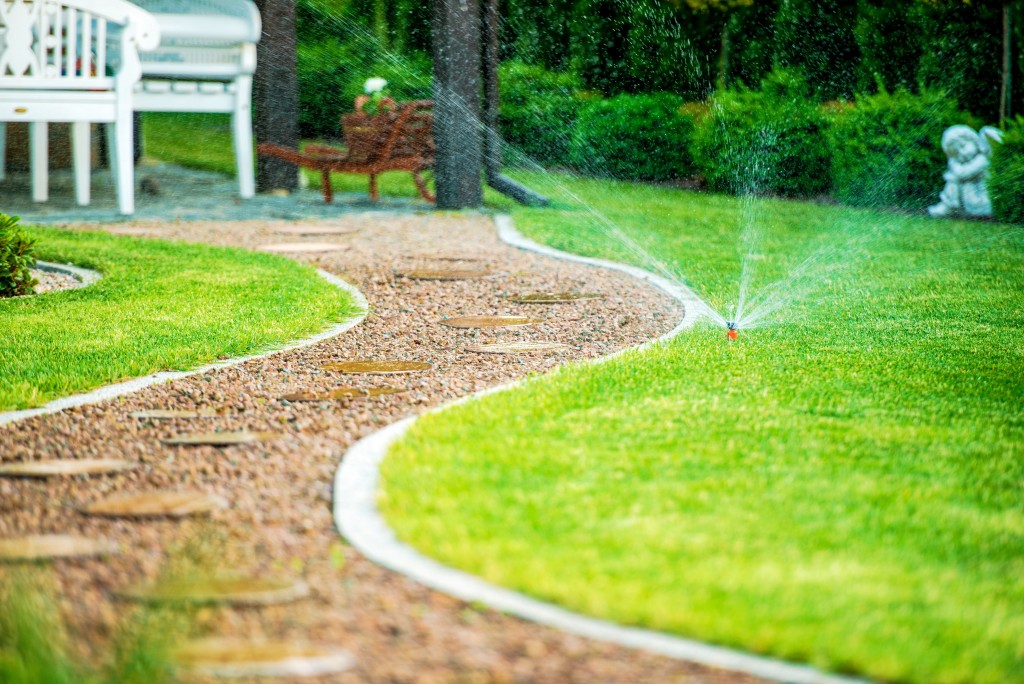Everyone needs his or her own sanctuary. Everyone needs a place where they can escape and recharge amidst the hustle and bustle of city life. A backyard garden can be your own personal oasis where you can reflect on your day, plan for your week, or simply sit back and relax after a tiring week.
However, having children in the picture can affect how you will design and set up your garden. While Oleanders and Azaleas can make your garden look prettier, ingesting their flowers or leaves can poison you. A small garden pond can make your garden look more relaxing, but it can lead to some drowning dangers.
Keeping your kids out of your garden may be one option, but kids will always be kids. They will need to play and run outdoors, and keeping them out of your yard is impractical. Keep your garden safe for your children, so they too can have fun in your little oasis.
Install a shed
You can build a shed or look for prefabricated sheds for sale. A shed is a perfect place to keep your garden tools and paraphernalia. You can also use it as storage for pesticides and fertilizers that you use in your garden. Keep your weed and pest killers locked in the shed and away from the reach of your children. Children are naturally curious explorers, and as a result, thousands of children die every year from poisoning. The common causes of poisoning in children include household products and pesticides.
The chemicals that you use are not the only dangers present in your garden. Your gardening tools, such as your shovels and rakes, can be dangerous when your children get a hold of them. Keeping them locked in your garden shed can make your garden more child-friendly and enjoyable for the whole family.
Build a fence
Since children are natural explorers, they can easily get attracted by anything in your neighbor’s yard. You cannot control what your neighbors may have in their yards, but you can control and stop your children from wandering off. A fence can keep your children safe within your property. It will also keep stray animals from wandering into your yard and causing damage to your garden.
A fence can also help secure your property, giving you peace of mind. It can keep your nosy neighbors and complete strangers off your yard.

Steer clear and get rid of poisonous plants
While it may be easy to avoid planting poisonous flowers, you should also be on the lookout for poisonous weeds. Look out for white hemlocks, wild parsnips, giant hogweeds, and poison ivies among many others. However, you must be extra careful when removing and disposing of poisonous plants and weeds. You must remove the entire root, or it will just grow back up again.
When handling poison ivy, for instance, you must be very careful in handling and disposing of it. Even if dead, it can emit a toxin called urushiol. The toxin can stay active for up to five years, even if the plant is dead. Wrap the dead poison ivy plant carefully in a heavy-duty plastic or garbage bag. You must close it and fully secure it so that no one will accidentally touch or brush it. Do not burn it, as it will release toxins into the air. After weeding and handling the poison ivy, wash your clothes with hot water and a strong detergent to remove traces of the toxin.
Remember to also remove plants with indelible fruits. Your children might mistake its fruits for a delicious treat.
Give them a space of their own
It is only natural that your children will want to be wherever you are. If there are parts of your garden that you don’t want your children to be, why not create a space for them? Give them a section of your garden where they can be free to play and do some gardening work themselves. Give them tools that are safe for them to use. Plants with deep roots are ideal for children who want to try their hand at gardening. These plants are tough enough to survive your children’s rough play.
You can also give your children vegetables that grow quickly to tend to. Your children will enjoy watering and watching their vegetables grow and it will also teach them responsibility.
A sandpit can keep your younger children entertained and engaged. Place it in a location under the shade of a tree, so they can play even under the summer sun. You can do your own gardening activities or you can have your much-needed rest while your children enjoy their own little world. Cover the sandpit when they are not using it to protect it from unwanted pests and animals.
Designing and creating a garden that is safe for everyone in your family can make it more enjoyable and relaxing for you. Expose your children to the joys of a garden without endangering them through careful and thoughtful planning.
